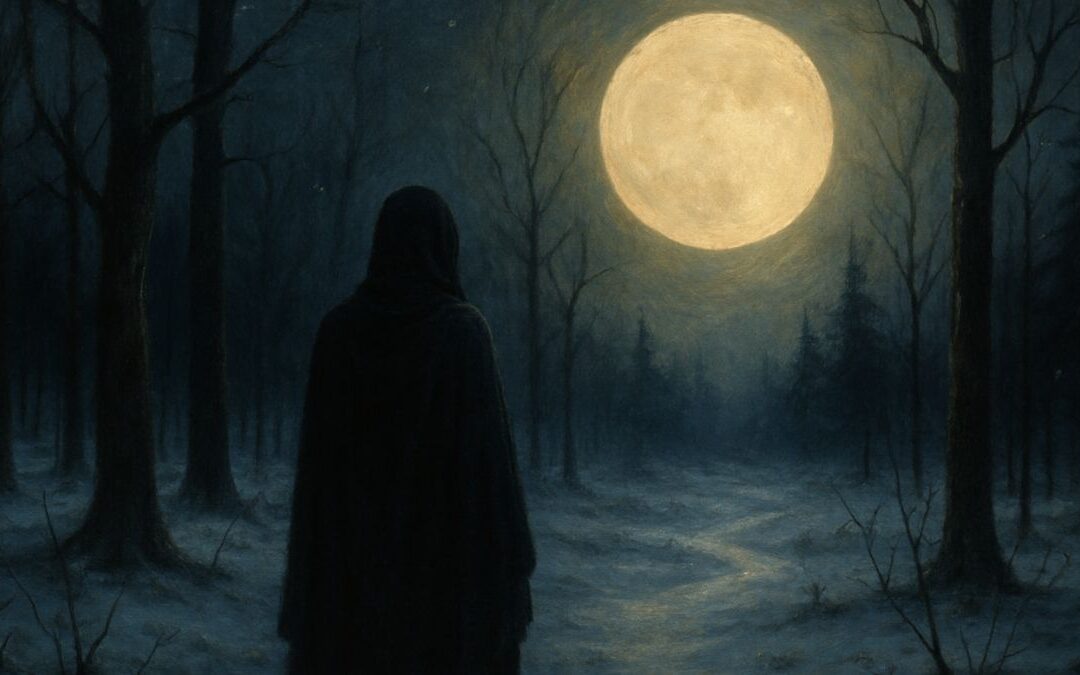- The Gist
- What is Surrealism?
- Who Started the Surrealist Movement?
- What Are the Key Characteristics of Surrealist Art?
- Who Are Some Famous Surrealist Artists?
- How Did Surrealism Influence Art and Culture?
- What Is “Automatism” in Surrealism?
- What Are Some Common Themes in Surrealism?
- How Can I Recognize Surrealist Art?
- Why Is Surrealism Still Relevant Today?
- Embracing the Spirit of Surrealism
- Let’s Talk
- Let’s Learn Vocabulary in Context
The Gist
What is Surrealism?
Surrealism is an artistic and literary movement that emerged in the early 1920s. It focuses on exploring the unconscious mind, often drawing on dreamlike or fantastical images to challenge our perception of reality. By blurring the line between the conscious and subconscious, surrealism invites viewers to explore ideas and emotions that lie beneath the surface. Inspired by the psychological theories of Sigmund Freud, surrealism encourages free expression of thoughts and dreams without censorship, resulting in artwork that defies logic and embraces the strange, mysterious, and even bizarre.
Who Started the Surrealist Movement?
Surrealism was formally founded by French poet André Breton, who published the first Surrealist Manifesto in 1924. Breton’s manifesto defined surrealism as “pure psychic automatism,” or a method of tapping into the subconscious without interference from the rational mind. Breton was heavily influenced by Freud’s theories on dreams and the unconscious, believing that freeing the mind from logical constraints would allow for a deeper understanding of the self and the world. Breton and other artists sought to escape traditional boundaries of art, focusing instead on spontaneity, emotion, and imagination.
What Are the Key Characteristics of Surrealist Art?
Surrealist art is known for its dreamlike quality, featuring unusual imagery, unexpected juxtapositions, and elements that seem to come from an alternate reality. Key characteristics include:
- Juxtaposition: Placing unrelated objects together to create surprising and thought-provoking combinations.
- Transformation: Distorting or changing familiar objects to create something entirely new.
- Automatism: Using techniques that allow the artist’s unconscious mind to take control, often resulting in spontaneous, abstract forms.
- Dream imagery: Drawing inspiration from dreams, symbols, and personal emotions.
Surrealism often uses recognizable objects but presents them in strange ways, making the viewer question their understanding of reality. Common surrealist techniques include collage, photomontage, frottage (rubbing), and decalcomania (pressing paint between surfaces to create textures).
Who Are Some Famous Surrealist Artists?
Surrealism attracted many notable artists who explored the depths of the subconscious through their work. Some of the most famous surrealist artists include:
- Salvador Dalí: Known for his melting clocks in The Persistence of Memory, Dalí’s work is full of bizarre, dreamlike images that often have a surreal twist.
- René Magritte: Famous for The Son of Man, featuring an apple obscuring a man’s face, Magritte played with everyday objects to challenge our perceptions.
- Max Ernst: A pioneer of surrealist techniques like frottage and decalcomania, Ernst created dreamlike landscapes full of fantastical creatures.
- Joan Miró: Known for his colorful, abstract style, Miró’s work often features playful shapes and whimsical forms.
- Frida Kahlo: While not always classified as a surrealist, Kahlo’s personal and symbolic style aligns with surrealist themes, exploring identity, dreams, and the subconscious.
How Did Surrealism Influence Art and Culture?
Surrealism had a profound impact on art and culture, extending beyond painting to influence literature, film, and even fashion. Surrealist ideas encouraged a break from tradition, allowing artists and creators to experiment with new forms and push boundaries. The emphasis on the subconscious mind and the rejection of logic resonated with movements like abstract expressionism and modernism, where artists sought to express raw emotions and ideas.
In film, surrealism inspired directors like Luis Buñuel and Alfred Hitchcock, whose work often explores themes of dreams, paranoia, and the unexplained. Even fashion and advertising have adopted surrealist imagery, using unusual and striking visuals to catch attention and provoke thought.
What Is “Automatism” in Surrealism?
Automatism is a technique used in surrealism to create art without conscious control, allowing the subconscious to guide the creative process. This practice might involve drawing or painting in a free, spontaneous way, letting the hand move without planning. Automatism was a way for surrealists to bypass rational thought, tapping into deeper parts of the mind. It was inspired by Freud’s idea that the subconscious holds valuable insights that our conscious minds often overlook.
Automatism can be seen in works like André Masson’s automatic drawings, which capture fluid, abstract forms created without predetermined ideas. The concept of automatism also influenced later art movements like abstract expressionism, where artists focused on spontaneity and emotion rather than traditional techniques.
What Are Some Common Themes in Surrealism?
Surrealism explores a range of themes, often delving into areas considered taboo or hidden from everyday life. Some common themes in surrealism include:
- Dreams and the unconscious: Exploring the mind’s hidden layers and dream imagery.
- Desire and emotion: Examining raw emotions, desires, and internal struggles.
- Fantasy and escape: Creating alternative worlds that defy the constraints of reality.
- Identity and transformation: Investigating the self and the idea of change, whether physical or emotional.
Surrealism’s emphasis on dreams and emotions offers a lens through which we can question societal norms, express individuality, and explore human psychology.
How Can I Recognize Surrealist Art?
Recognizing surrealist art can be as simple as noticing certain visual cues that feel strange or dreamlike. Look for:
- Unusual combinations of objects that wouldn’t typically go together.
- Distorted forms or exaggerated features.
- Images that seem to come from a dream or nightmare.
- Familiar objects presented in unfamiliar or unsettling ways.
Surrealist art often gives a feeling that something is slightly “off,” encouraging viewers to dig deeper into the work’s meaning. When you see a painting that makes you think, “What am I really looking at?” you may be viewing surrealism at work.
Why Is Surrealism Still Relevant Today?
Surrealism remains relevant because it challenges us to think beyond the obvious and explore our deeper selves. In a world where logic and reason often take center stage, surrealism offers a space for mystery, creativity, and imagination. Modern artists, filmmakers, and writers continue to draw inspiration from surrealism to explore themes of identity, fantasy, and the subconscious. Surrealism reminds us that there’s more to reality than what we see on the surface, inviting us to embrace the unexpected and celebrate creativity.
Embracing the Spirit of Surrealism
Surrealism is more than an art movement—it’s a way of seeing the world through a different lens, one that celebrates the mysterious and unexpected. From its origins with André Breton to its influence on film and fashion, surrealism has pushed the boundaries of creativity and inspired people to look beyond the ordinary. Whether you’re fascinated by the bizarre landscapes of Dalí or the symbolic works of Kahlo, surrealism invites you to explore the unknown and find beauty in the strange. Embracing the spirit of surrealism means allowing yourself to dream, to question, and to see reality in new and imaginative ways.
Let’s Talk
Surrealism—what a fascinating world, right? It’s this whole art movement that asks us to forget logic for a second and just dive into the bizarre, the dreamlike, and the unexpected. I mean, how often do we get a chance to do that in our daily lives? Normally, we’re all about following the rules, sticking to routines, and finding order in things. But surrealism takes all of that and tosses it out the window. Suddenly, we’re looking at clocks that melt, people with apples for faces, and worlds that don’t make any sense but somehow feel like they should.
Have you ever looked at a surrealist painting and just thought, “What on earth am I looking at?” That’s exactly the point! Surrealism isn’t about giving us answers. It’s more like an invitation to question what we think we know. When you see something strange, like a fish swimming in the sky, you might think, “That’s impossible.” But surrealism makes us ask, “Why is it impossible?” It’s this little nudge to let our imagination stretch its legs a bit.
In a way, surrealism is also about connecting with parts of ourselves we don’t always acknowledge. Those weird dreams, the strange thoughts that pop up out of nowhere—surrealism says those are worth exploring. It’s like the art equivalent of sitting down and saying, “Tell me what’s really on your mind.” And there’s something really freeing about that, don’t you think? It lets us accept that not everything in life has to fit neatly into a box.
What’s funny is that, even though surrealism is over-the-top, we see traces of it everywhere today. Ever watched a movie or read a book that takes a sudden, surreal turn? It might not make sense logically, but emotionally, it hits just right. Sometimes, art that doesn’t follow the usual rules sticks with us the most. It’s like how dreams can feel more meaningful than our daily routines, even though they’re just our minds playing around.
So here’s a question: When’s the last time you let yourself get a little surreal in your own life? Maybe it’s trying something just for fun, like doodling without any plan or even watching the clouds to see what shapes pop up. It’s funny, but letting ourselves go a little “surrealist” from time to time can be pretty refreshing. And who knows? Maybe the next time you see something strange, instead of saying “That’s weird,” you’ll think, “Maybe there’s a story in this.”
Let’s Learn Vocabulary in Context
Let’s dig into some of the words and phrases we explored while talking about surrealism. These are words that can make our everyday conversations a little more colorful and expressive, especially when we’re talking about creativity, imagination, and things that go beyond the ordinary.
First, let’s start with surrealism itself. Surrealism is an art movement that explores the strange, dreamlike, and unexpected. We can use “surreal” to describe anything that feels strange or otherworldly. For example, “Meeting my favorite actor was surreal—it felt like a dream.”
Then we have dreamlike. This word captures something that feels like a dream, usually something soft, hazy, or a bit mysterious. You could say, “The fog over the lake made everything look so dreamlike and peaceful.”
Juxtaposition is a word that means placing two things side by side, especially to create contrast. In surrealism, artists put strange objects together to surprise or confuse us. You might hear it used in daily life to describe an unusual combination, like, “The juxtaposition of sweet and salty flavors makes this dish so interesting.”
Next is fantastical, which means something imaginative, magical, or out of this world. A surrealist painting might show fantastical creatures, like animals with wings. In conversation, you might say, “The story had a fantastical setting with floating castles and talking trees.”
Unconscious is a word that means the part of our mind we aren’t actively aware of. Surrealism taps into this, pulling out strange ideas from our subconscious. You could use it like this: “Sometimes, our unconscious mind knows things before we do.”
Let’s look at manifesto. This is a public statement that lays out the beliefs and goals of a person or group. André Breton wrote the Surrealist Manifesto to explain what surrealism is all about. You might hear someone say, “The artist released a manifesto to explain her creative vision.”
Automatism is a technique in art where you let your hand move freely, letting the subconscious guide you. While we might not use this exact word every day, the idea is about spontaneity. You could say, “I went into automatism mode while journaling, just letting my thoughts flow without overthinking.”
Symbolism is when objects or images represent something deeper. In surrealism, a clock might symbolize time slipping away. You could say, “The broken mirror in the movie was a symbol of her shattered confidence.”
Distortion is a word that means changing the shape or appearance of something to make it strange or different. Surrealism often uses distortion to surprise us. In conversation, you might say, “The artist distorted the building in the painting, making it look like it was melting.”
Finally, alternative means a different or unique option. Surrealism gives us an alternative way of seeing reality, breaking free from the usual rules. In everyday life, you might hear, “Let’s consider some alternative ideas for the project.”
Now, here are a couple of questions to think about: Have you ever had a dreamlike experience that felt almost too strange to be real? And how do you feel about the idea of using symbolism to express things you can’t put into words?










0 Comments